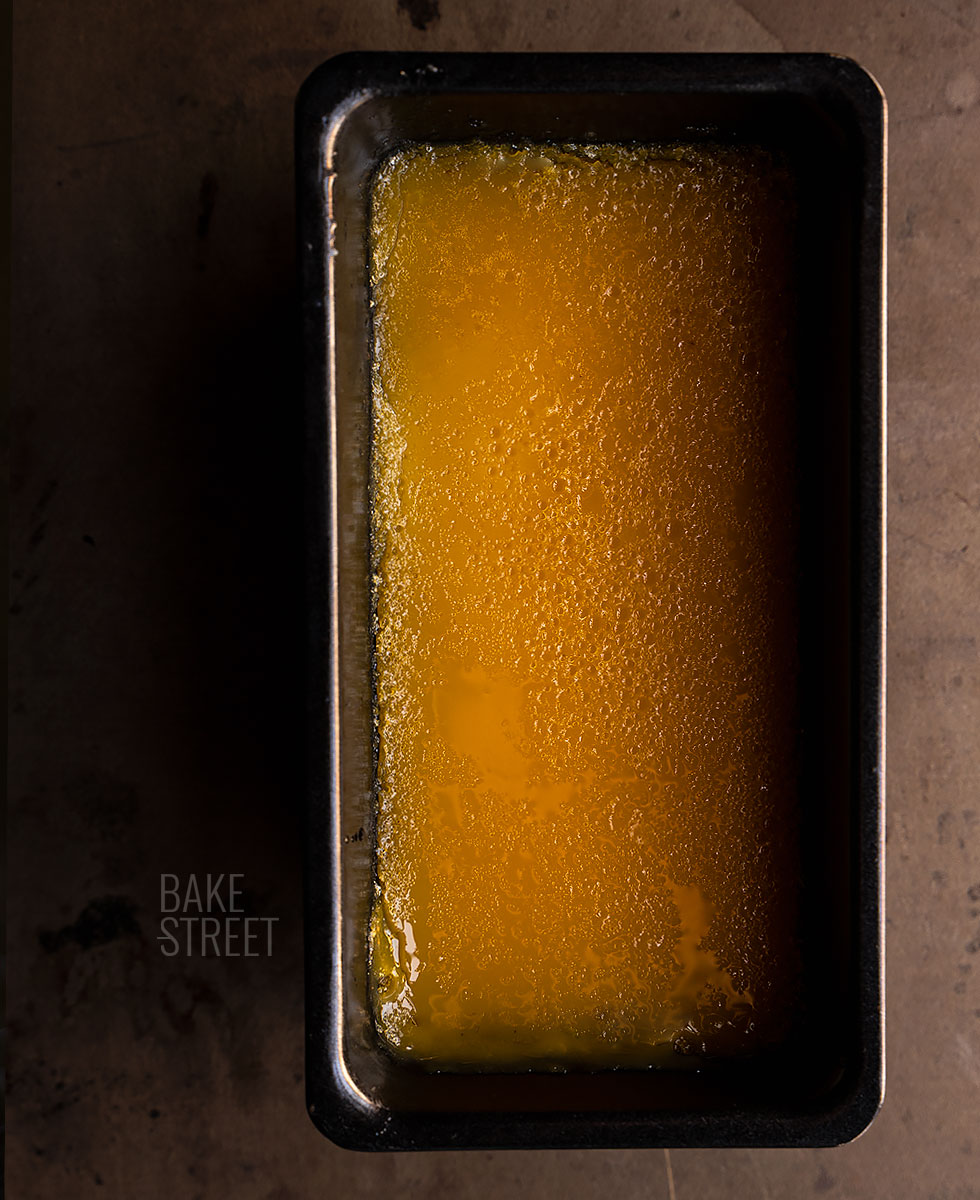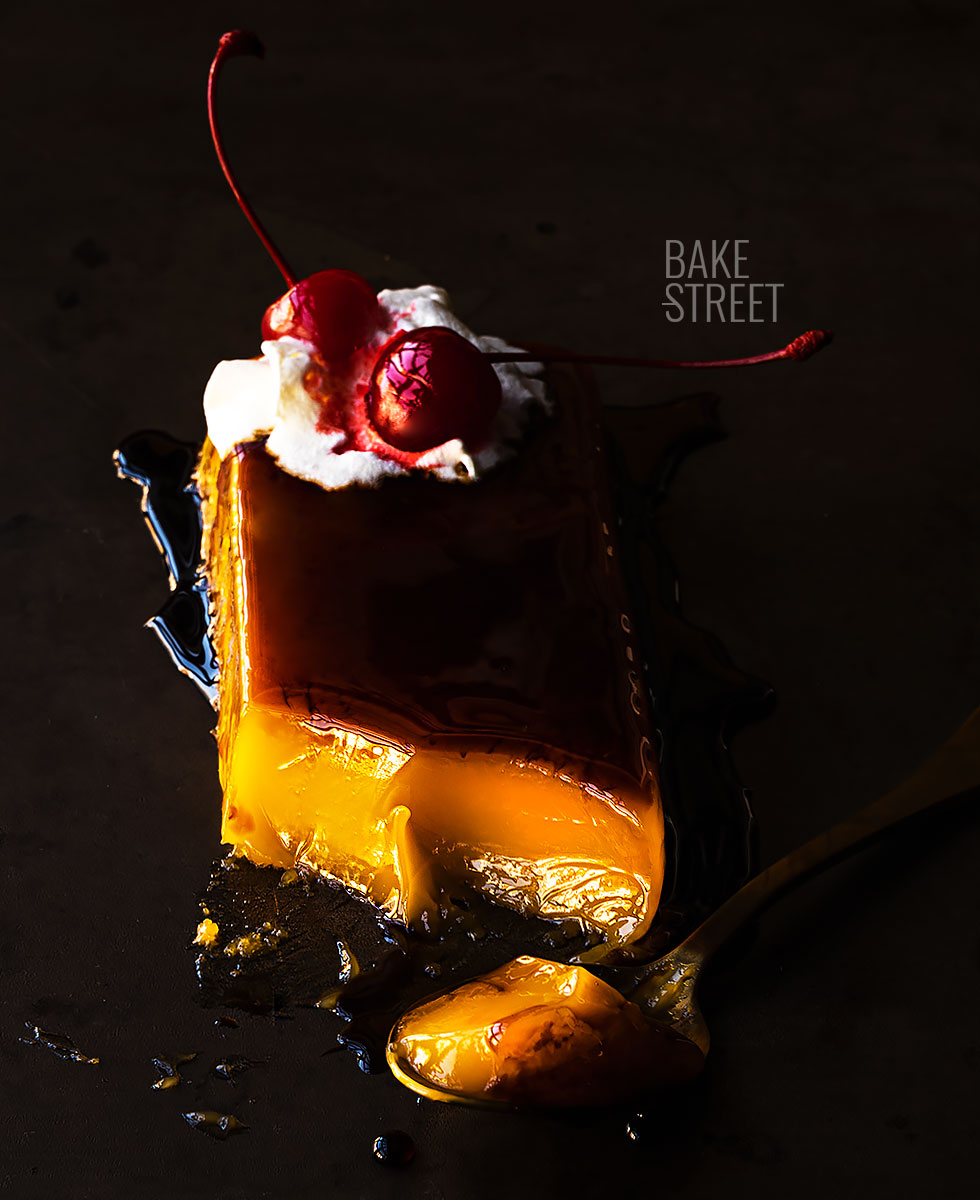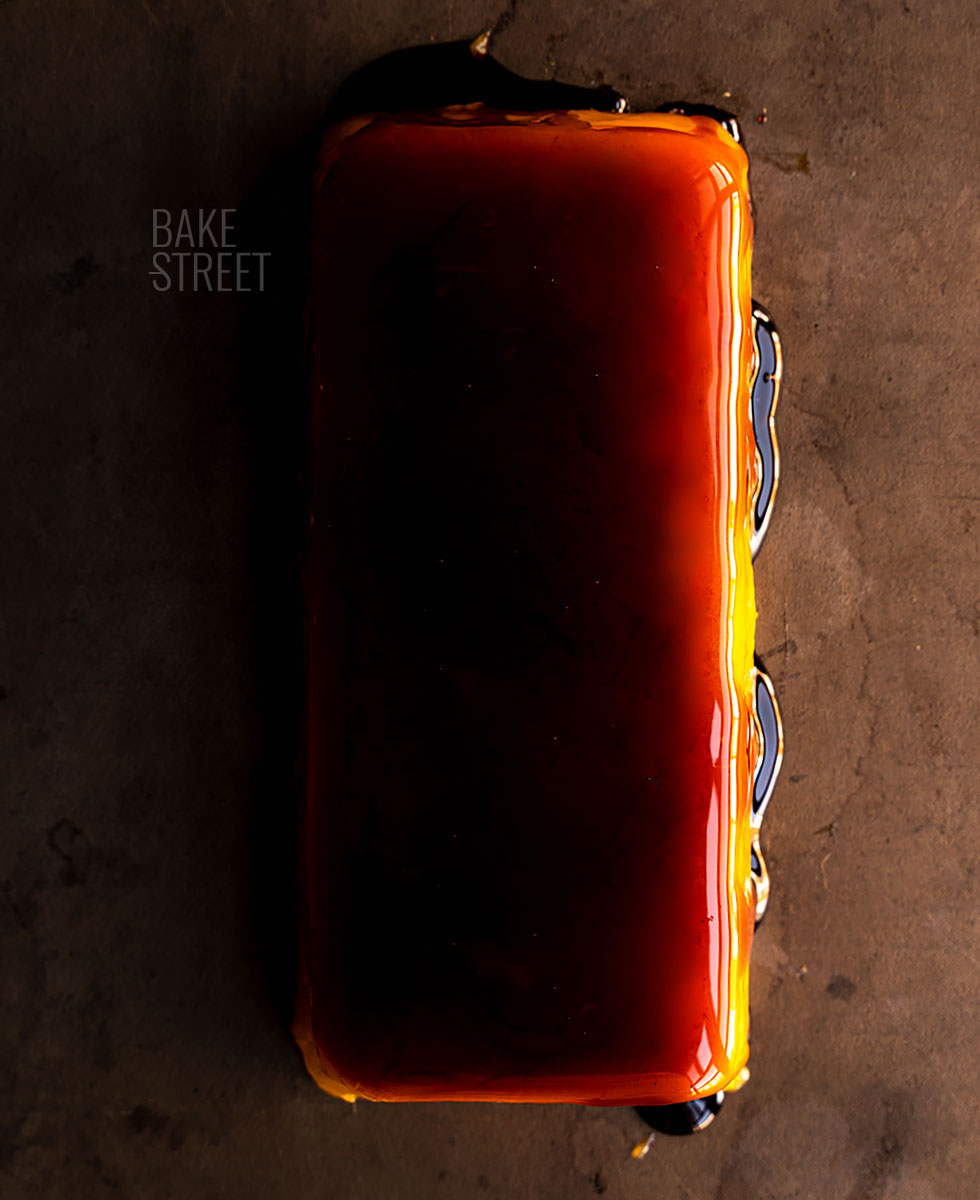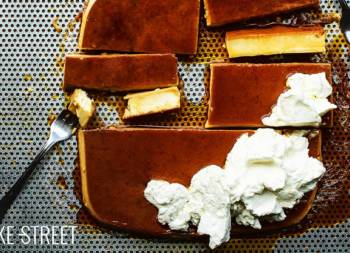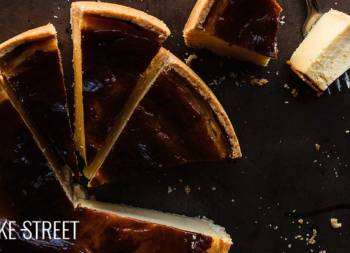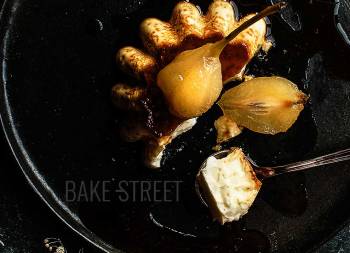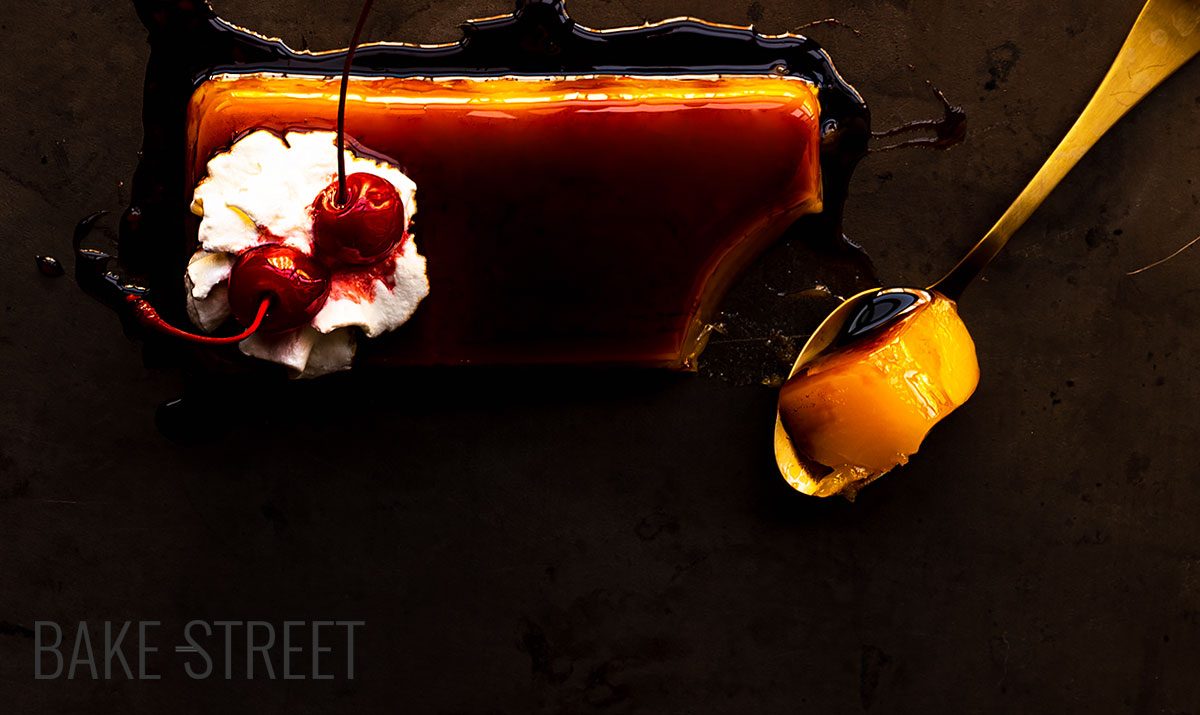
How to make homemade Tocino de Cielo, Spanish dessert
It may seem impossible, but I had never made homemade Tocino de cielo before. It’s a traditional dessert from Spain that I have eaten hundreds of thousands of times, in fact my mother used to buy it a lot because my father was fascinated by it …. Hence I tasted it and, of course, unconditional love from the first spoonful.
It is one of those recipes that I have always thought about making, but never ended up preparing. The other day I had to prepare a recipe that needed a lot of egg whites…. And, of course, what am I going to do with 8 yolks with the short shelf life they have outside the egg. I said to myself, today is the perfect day to make tocino de cielo. And at ten o’clock at night I started to do it, blessed moment when I did it!
It is true that, while I was preparing dinner and some things, I was reading about the process. I found a lot of difference between some recipes and others. Some incorporated, in addition to the yolks, a whole egg (I deduce that it will help to set the dessert much earlier, but it also leaves a lighter color, so I discarded this process), the amount of sugar between some recipes and others were very high (and that I reduced the amount quite a lot and, even so, it is very sweet), the temperatures and cooking times very different…. Still I said to myself, what do I have to lose, at most 8 yolks and the cost of the electricity, which is crazy here. No big deal, hahaha
I didn’t think it was going to look very good because the difference between some processes and others, were very disparate. I decided to take all the information, write it down in a notebook and adjust it to what, in my humble opinion, could give a good result. Without forgetting to control the whole process during the baking because something can always go wrong. In the end, hey, what a dessert! Reminiscing my childhood with every spoonful.
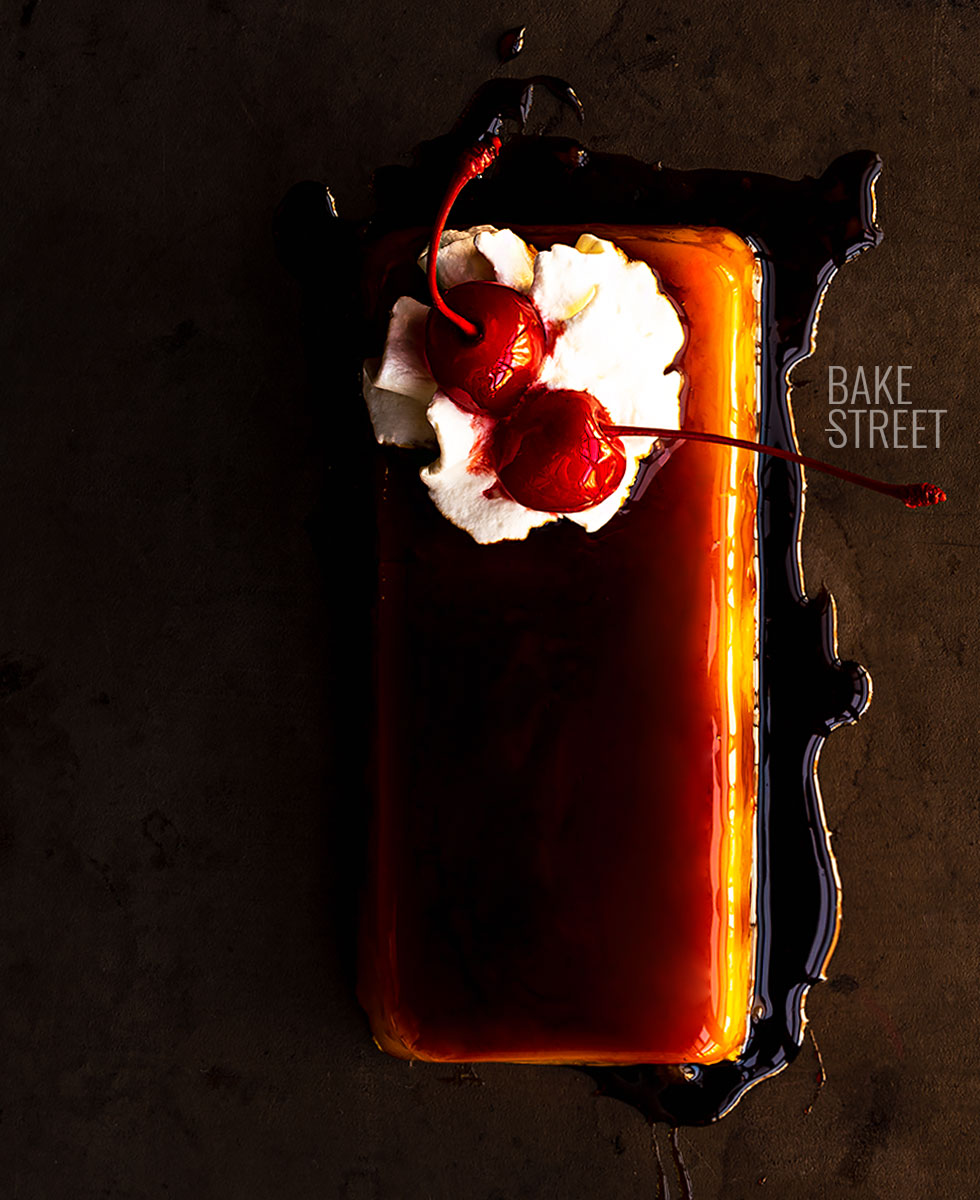
Tocino de cielo origin.
Tocinillo de cielo is a sweet treat, apparently easy to make, that is about half a millennium old. A recipe that consists only of egg yolks, sugar and water, but of which everyone has and will always have a wonderful memory.
I say apparently because, although the process itself is not difficult, it is important to control and take care of each step to achieve a good result.
They originated in the Cádiz city of Jerez de la Frontera, where the nuns of the Holy Spirit Convent (convento del Espíritu Santo) invented this dessert to use the large quantity of egg yolks they received from the many wine cellars in this area. These donations of huge quantities of yolks come from the ancient tradition of using egg whites to clarify the wine and leave it free of impurities and residues before bottling. This method is still used in some wineries.
The exact date of the origin of this sweet is not known for certain, but there are those who place it more than five hundred years ago. There is evidence of some documents that certify these ancient donations of yolks. Apparently two dozen eggs were used for a thousand liters of wine.
In the historical archives of González Byass, in one of the inventory books of 1837, the purchase of one thousand eggs per month is detailed, for which 50 reales de vellón were paid.
After separating the egg whites for use with the wine, the yolks were sent to the nuns.
They were the ones who created this sweet to give an outlet to so many yolks. Probably, among many other elaborations.
Originally, this dessert had the shape of a large cake. With the passage of time, different formats were developed, reaching the one that today, almost all of us recognize. The popular tocino de cielo in the shape of a small flan. A sweet treat that, if we remember, was presented in the pastry shop stands along with other cakes of individual format. It is very common to find some tocinillo de cielo in the cake trays. I always get it along with the cream puffs and smalls babá au rum. Oh, please!
This dessert was created by nuns from the yolks donated to them by the wineries of Jerez, which used the egg whites to clarify the wines.
The name “tocino de cielo” was given by its appearance and color, similar to pork bacon. The name of the dessert comes from the place where this dessert was elaborated.
Wine clarification; what it is, how it is done and what results it gives.
I know that today’s recipe has nothing to do with wine clarification, but after searching for information and reading about it, I thought it would be interesting to talk about and briefly detail part of this process. Let’s not forget that our dessert came about thanks to this method and the hands of the nuns.
What is wine clarification: It is an oenological technique that is carried out to separate and deposit at the bottom the natural particles that are in suspension during the winemaking process. The aim is to achieve a clear, pure wine that is not turbid.
Why is wine clarified?: After the wine undergoes a fermentation process, there are particles in suspension, natural and typical of the fermentation process, such as yeasts and bacteria. It is for this reason that a fining process is carried out to clean and balance the final product.
How is the clarification process carried out? There are several processes to make it.
On the one hand, there is spontaneous clarification, in which nature is expected to take its course and the particles fall under their own weight. Then the wine is racked to isolate these sediments. The “bad” thing about this process is that the end result is not as clean and there are always particles left behind.
On the other hand, clarification can be carried out with egg whites. By using this method, apart from removing impurities, the wine is also “tamed”, i.e. it is softened of any hard tannins it may contain.
Something to consider with this process, according to some winemakers, is that since it is an allergenic ingredient, it should be specified on the bottling. Synthetic clarifying agents are available to carry out this process or to support spontaneous clarification.
After all this rather curious information, I leave you with the detailed process to prepare your wonderful “tocino de cielo” at home.
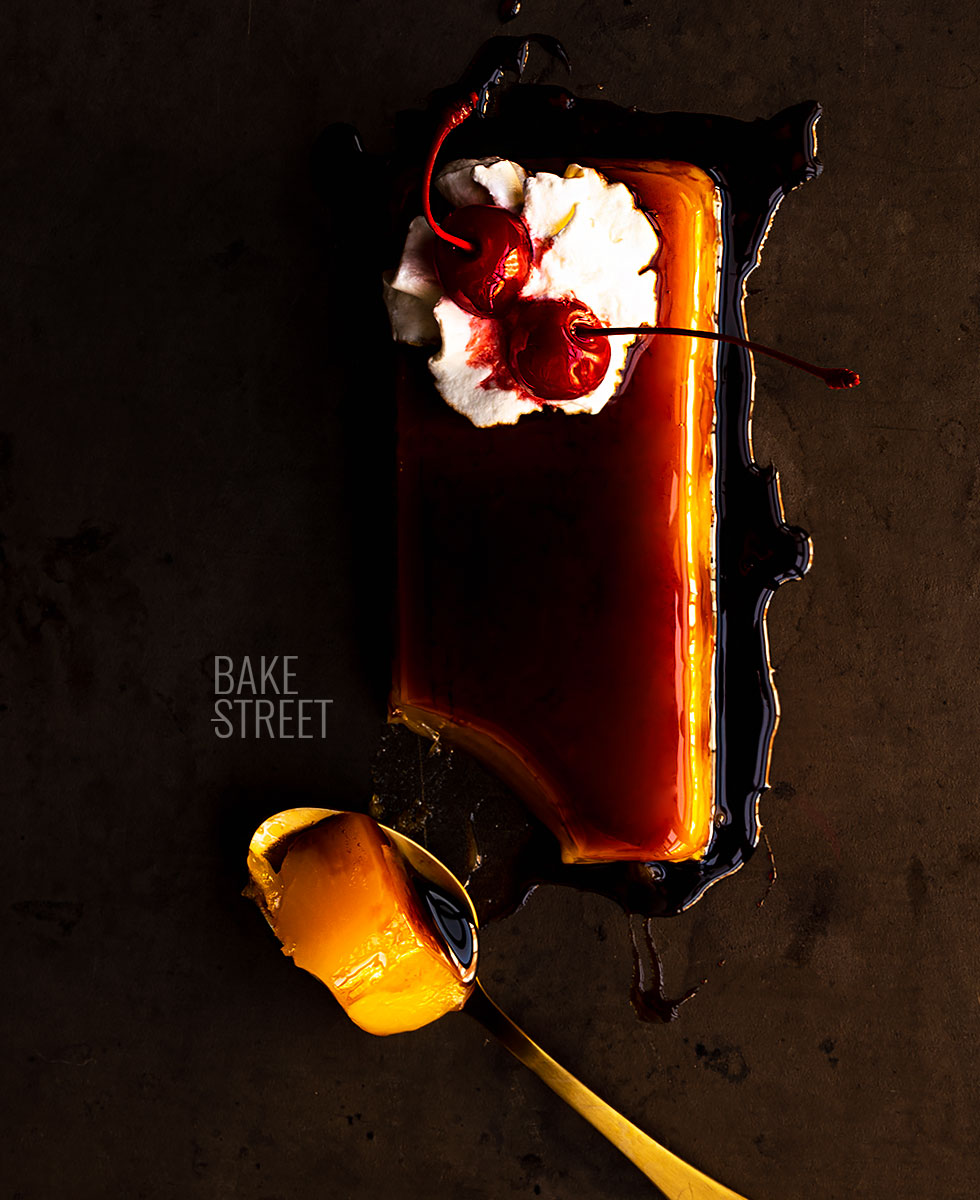
Recipe tocino de Cielo
Ingredients for 2 rectangular molds, 7'5 x 14'5 cm
TOCINO DE CIELO:
- 8 large yolks, at room temperature
- 235 g sugar
- 100 g water
- caramel
CARAMEL:
- 65 g sugar
- 1 Tbsp water
MATERIAL WE WILL NEED:
- saucepan
- 2 rectangular molds, 7,5 x 14'5 cm
- digital kitchen thermometer
- bowl
- whisk
- strainer
- recipient for bain-marie
- cooling rack
Instructions
Prepare caramel for the molds.
- In this step, depending on your desire, you can prepare a caramel for the base or use a store-bought one.
- In a saucepan, add the sugar and water. Place over medium heat.
- Let it begin to melt without stirring. Once it starts to caramelize, stir often to prevent some areas from burning. Reduce the heat a little if necessary.
- Once we have a golden caramel, pour into the molds we are going to use. We make sure to cover both the base and the sides, so it will be much easier to unmold them.
- Set aside.
Prepare syrup for tocino de cielo.
- In a saucepan add the sugar together with the water, in this order.
- Place over medium low heat and allow the sugar to dissolve completely.
- Once it has dissolved and the water begins to bubble, turn the heat up to medium high and let it reach 230ºF/110ºC.
- At this point, remove from heat and let stand for 8-10 minutes.
Preheat the oven.
- Preheat the oven to 347ºF/175ºC with heat up and down.
- Place a recipient/tray, in the central part and on the rack, with hot water.
- Leave inside the oven.
Prepare the yolks.
- In a heat resistant bowl, add the egg yolks and mix, gently, with the help of a whisk.
- After the syrup has rested, begin to pour the syrup over the yolks in a thin, continuous thread while mixing with the whisk. The movement must be smooth and continuous, we must not beat with force or speed, otherwise we will incorporate air and this is not what we are going for.
- Once we have incorporated all the syrup, stir for about 30 seconds with the whisks, but always with soft and delicate movements.
Pour into the molds and bake.
- Using a strainer, pour the egg yolk mixture into the molds (previously caramelized). Divide the mixture between the two molds.
- Line the surface with aluminum foil, remembering to put the shiny side down (which is the polished side), and place in the tray with hot water in the oven.
- Bake for 70-75* minutes or until when pricking it is set.
- Remove and let cool completely on a wire rack.
- Refrigerate until the next day or a minimum of 12 hours.
- *NOTE: The cooking time will be influenced by the oven, the material of the molds and even the bain-marie baking dish. The amount of water must cover the molds by half. It is possible that, if the conditions change, the cooking times may also be shorter or longer. It is important to observe and check after 40 minutes of cooking.

Unmold and serve.
- Carefully slide a knife around the edges or contour of the tocino de cielo.
- Turn out onto a plate or platter.
- Serve in a whole portion or in small portions. If desired, it can be decorated with whipped cream and Maraschino cherries.

Notes
- Yolks have a short shelf life once they are removed from the egg shell, unlike egg whites. They should be used within a maximum of 24 hours from the time they are removed from the inside of the egg. They can be frozen, but the result after thawing will not be a creamy texture. In fact, it is recommended to add a little salt or sugar, depending on the purpose to be served after thawing. For that reason, whenever I have surplus (which is not very often), I make recipes that require a lot of yolks; tocino de cielo (although I had not done it before, but it becomes a must when I have a lot), pastry cream, French butter cream, butterbeer, ice cream, tonnato sauce...
- Yolks should be at room temperature, never cold. Otherwise, with the change of temperature, they may curdle. Be cautious and temper them in time, about 2-3 hours before use.
- If we wish, we can use vanilla flavored sugar. In my case, I always keep the seedless vanilla pods in the sugar. In this way, little by little, it will be flavored and will give that "special taste" to your elaborations.
- The syrup should be a little lighter than a syrup at the strand point (this is around 244º-250ºF/118º-121ºC). We need it at 230ºF/110ºC, we should not exceed this temperature because when it cools, the syrup will begin to solidify and this will make it difficult to integrate with the yolks. Nor should it have a lower temperature because, if so, the syrup will be very watery and will give us problems with the consistency of tocino de cielo.
- Before adding the syrup with the yolks, we must wait for the syrup to reduce its temperature a little to prevent the yolks from coagulating.
- The syrup must be integrated in a thin and continuous thread to help the yolks to gradually temper and the final texture to be homogeneous and without lumps.
- We should NEVER mix or beat the yolks with the syrup in a mixer or electric whisk. If we do so, we will incorporate a lot of air into the mixture and this is NOT what we want. It can cause bubbles inside the tocino de cielo. This step should always be done manually.
- Before pouring the mixture into the molds, pass it through a strainer to remove any curdled yolk or chalaza.
- We must cover with aluminum foil to prevent water from falling into the mixture, in addition to toasting the top of the dessert.
- It is important that the water in the tray, where we will place the molds, is not more than half of the height of these. The water must be hot or almost boiling, if we add it cold, it will take a long time to reach temperature and this will prolong the final cooking time.
- The oven temperature should not be too high. It is important that they are baked with moderate heat so that the final texture is creamy, soft and without bubbles inside.
- The final baking time will always depend on each oven and the size of the mold + material used. Although it is very approximate, it is important to control the process to avoid excessive curdling and loss of creaminess or, on the contrary, to take them out too early and the final result is a custard.
- I advise you to start checking the consistency after 40 minutes. Carefully remove the aluminum foil and observe its consistency. If it is set and we can prick a knife and take it out, without an overflowing liquid or fluid mixture, but still observe that it is creamy, it is ready. It should not be too firm and dry.
- We can keep them in the refrigerator for 4-5 days.

Tell me, how many of you are going to prepare this homemade Tocino de cielo today? I assure you that you won't regret it, that you'll get a big wave at home and that you'll never have invested your egg yolks in a better way.
You may say to me, "Okay, what do we do with 8 egg whites? The good thing about egg whites is that they last a long time in the refrigerator and, depending on what we are going to prepare, we can freeze them. In my case I am in favor of refrigerating them in glass jars, they last in perfect condition for 15 days.
You can prepare macarons, meringue, dry meringues or a meringue log, Molotof, egg white sponge cakes (like this one), or Bica gallega, Pavlova.... We have many possibilities, plus we can keep them for a few days, without rushing.
I wish you a wonderful midweek!
Lots of love,
Eva
Sources: Heraldo, Torre Milanos
